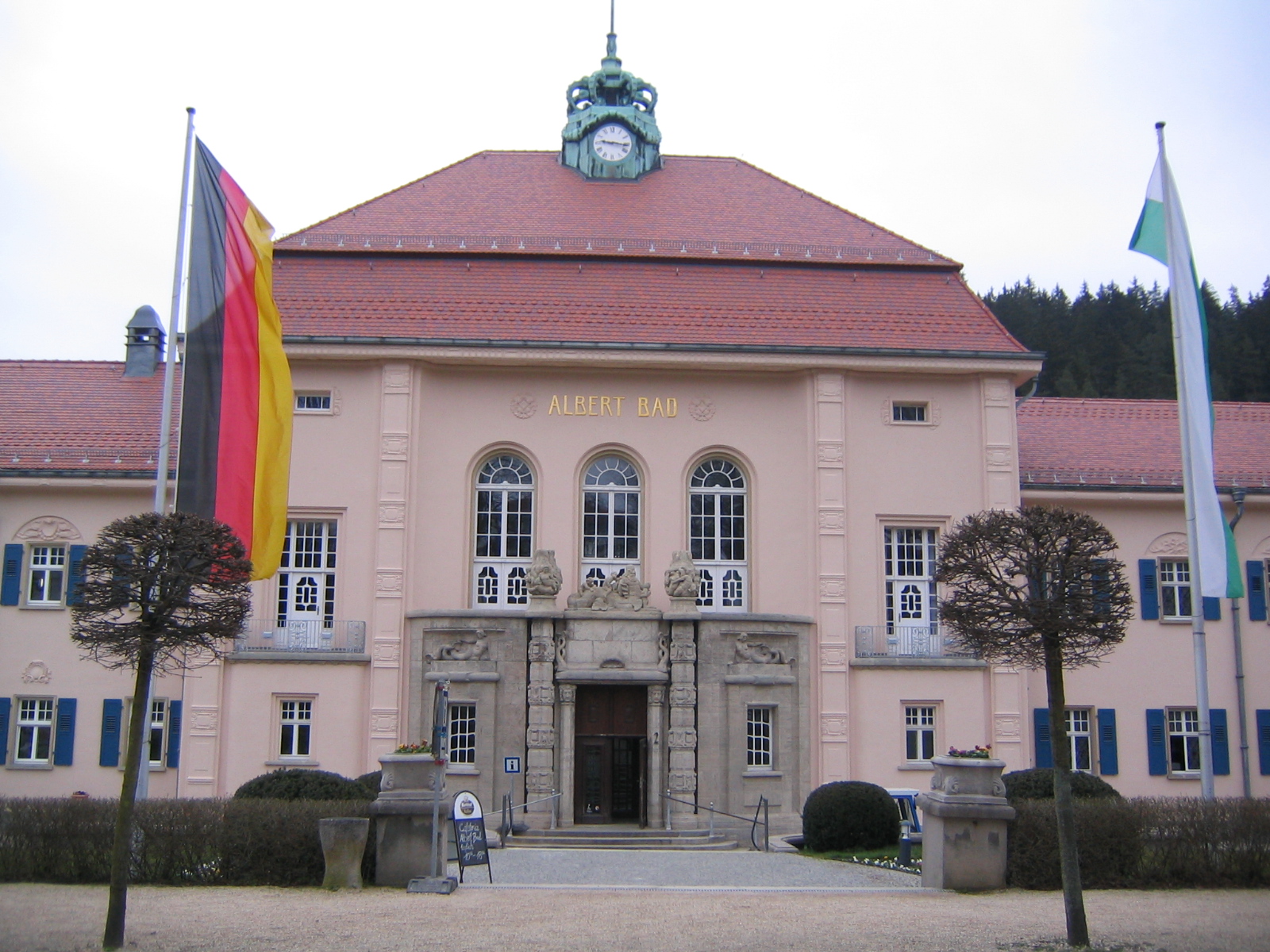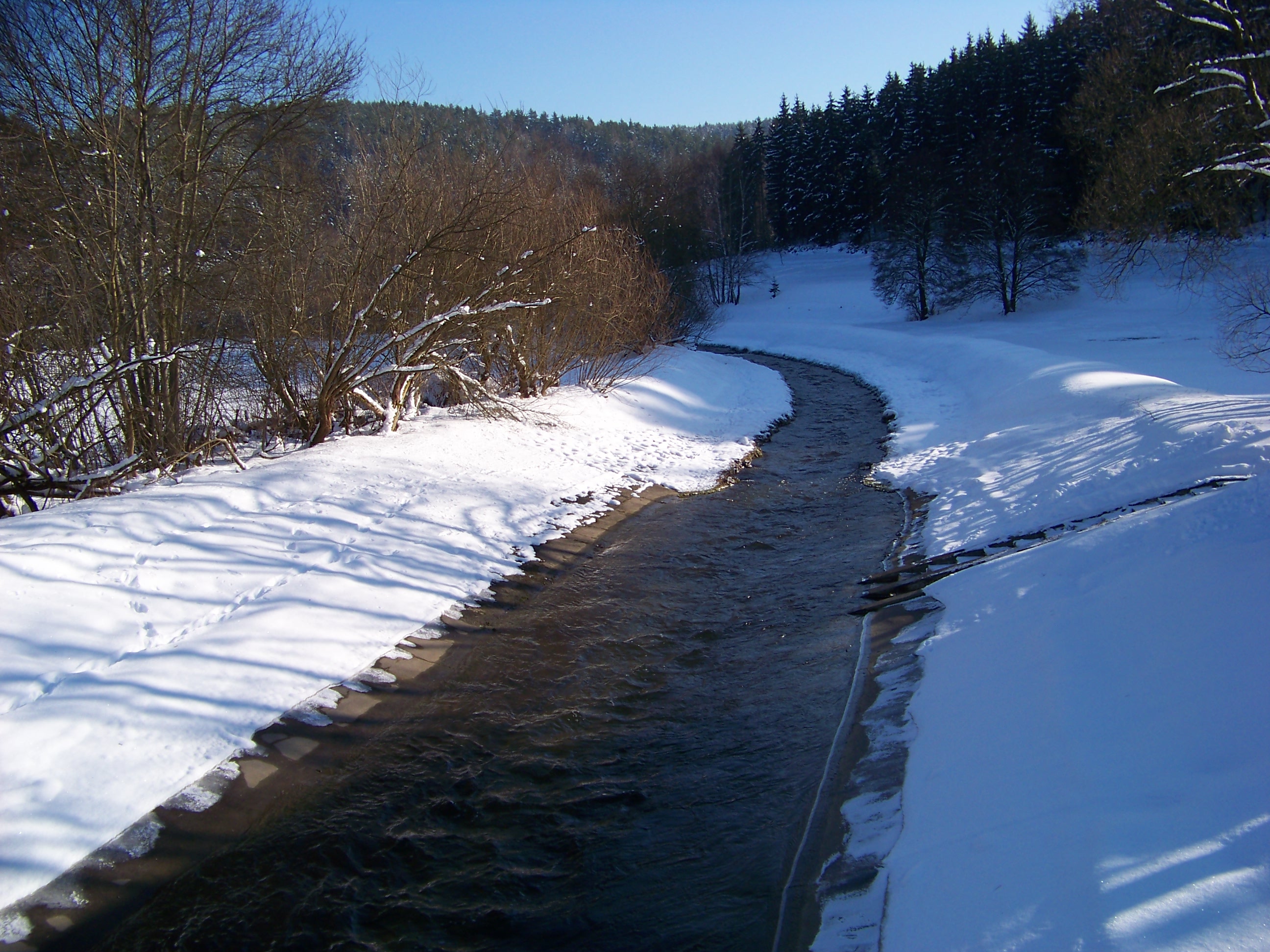Bad Elster on:
[Wikipedia]
[Google]
[Amazon]

 Bad Elster () is a spa town in the
Bad Elster () is a spa town in the
Bad Elster town's homepageInformation around Bad ElsterSächsische Staats Spas: Bad Elster Bad BrambachGenWiki-Artikel on Bad Elster
{{Authority control Spa towns in Germany Vogtlandkreis
 Bad Elster () is a spa town in the
Bad Elster () is a spa town in the Vogtlandkreis
The Vogtlandkreis () is a ''Landkreis'' (List of German rural districts, rural district) in the southwest of Saxony, Germany, at the borders of Thuringia, Bavaria, and the Czech Republic. Neighbouring districts are (from south clockwise) Hof (dist ...
district, in Saxony
Saxony, officially the Free State of Saxony, is a landlocked state of Germany, bordering the states of Brandenburg, Saxony-Anhalt, Thuringia, and Bavaria, as well as the countries of Poland and the Czech Republic. Its capital is Dresden, and ...
, Germany
Germany, officially the Federal Republic of Germany, is a country in Central Europe. It lies between the Baltic Sea and the North Sea to the north and the Alps to the south. Its sixteen States of Germany, constituent states have a total popu ...
. It lies on the border of Bavaria and the Czech Republic
The Czech Republic, also known as Czechia, and historically known as Bohemia, is a landlocked country in Central Europe. The country is bordered by Austria to the south, Germany to the west, Poland to the northeast, and Slovakia to the south ...
in the Elster gebirge hills. It is situated on the river White Elster
The White Elster (, ) is a river in central Europe. It is a right tributary of the Saale. The source of the White Elster is in the westernmost part of the Czech Republic, in the territory of Hazlov. After a few kilometres, it flows into easte ...
, and is protected from extremes of temperature by the surrounding wooded hills. It is southeast of Plauen
Plauen (; ; ) is a town in Saxony, Germany with a population of around 65,000. It is Saxony's 5th most populated city after Leipzig, Dresden, Chemnitz and Zwickau, the second-largest city of the Vogtland after Gera, as well as the largest cit ...
, and northwest of Cheb
Cheb (; ) is a town in the Karlovy Vary Region of the Czech Republic. It has about 33,000 inhabitants. It lies on the Ohře River.
Before the Expulsion of Germans from Czechoslovakia, expulsion of Germans in 1945, the town was the centre of the G ...
. It is part of the ''Freunde im Herzen Europas'' microregion.
History
Elster before 1800
Two kilometres north west of the town centre lies the remains of a twelfth-century walled village, known today as the "Alte Schloss" or "Old Castle". This was first documented in 1324. In 1412 a manor was sold to the von Zedtwitz family, who held it until 1800. In 1533 theReformation
The Reformation, also known as the Protestant Reformation or the European Reformation, was a time of major Theology, theological movement in Western Christianity in 16th-century Europe that posed a religious and political challenge to the p ...
reached Adorf
Adorf () is a small town and Municipalities in Germany, municipality in the Vogtlandkreis to the south-west of the Saxony, Free State of Saxony, Germany. Gettengrün, a village within the municipality, borders on the Czech Republic.
Etymology
Th ...
and its daughter church in Elster, and the first Protestant pastor was installed in 1540.
The healing properties of the waters from the spring now known as the Moritzquelle were recognised well before Georg Leisner, physician to the Duke Moritz von Sachsen-Zeitz, wrote in 1669 that inhabitants of both Adorf and Elster come to the spring to take the waters, and he had successfully used them on many different patients.
One famous visitor was Johann Wolfgang von Goethe
Johann Wolfgang (von) Goethe (28 August 1749 – 22 March 1832) was a German polymath who is widely regarded as the most influential writer in the German language. His work has had a wide-ranging influence on Western literature, literary, Polit ...
, who came in 1795. He mentions the spring at Elster in his work Hermann and Dorothea
''Hermann and Dorothea'' is an epic poem, an idyll, written by German writer Johann Wolfgang von Goethe between 1796 and 1797, and was to some extent suggested by Johann Heinrich Voss's ''Luise'', an idyll in hexameters, which was first publis ...
.
(Bad) Elster in the 19th and 20th century
Elster became an independent parish in 1851. In 1892 the old St. Peter und Paul church was demolished and replaced with the Revival Gothic, St. Trinitatiskirche. Elster was promoted to be the "Königlich-Sächsischen Staatsbad", official royal spa of Saxony in 1848. With that the visitor numbers rose: 1848: 129; 1850: 378, 1860: 1,750, 1870: 2,450, 1890: 5,870, 1900: 8,900, 1990: 15,600. Elster prepended the ''Bad'', meaning "spa", in 1875, ''Bad Elster'' became its official name in 1935. In 1880, Bademuseum Bad Elster opened; it was the first museum in the town and inVogtland
Vogtland (; ) is a region spanning the German states of Bavaria, Saxony and Thuringia and north-western Bohemia in the Czech Republic. It overlaps with and is largely contained within Euroregio Egrensis. The name alludes to the former leadershi ...
, but was short lived. A new museum opened in 1993.
Geography and transport
Places
Places within Bad Elster include Sohl and Mühlhausen.Demography
Growth of Population ''(from 1964 on, as of December 31st)'':Business
The main industries are tourism and health. There are seven clinics specialising in recuperation. In 2005 there were 35 establishments offering accommodation with 2,400 beds, and receiving 540,000 bednights. The town lies near the B 92. There are two open border crossings into the Czech Republic; open for pedestrians and bicycles but not cars, though postSchengen
The Schengen Area ( , ) encompasses European countries that have officially abolished border controls at their common borders. As an element within the wider area of freedom, security and justice (AFSJ) policy of the European Union (EU), it ...
even the barrier has been removed. The station is 2.5 km from the town centre at Mühlhausen on the Plauen Eger line where there is a two hourly service.
Politics
Town Council
The elections in May 2014 showed the following results: * Unabhängige Bürgerschaft (Independent citizens) 4 seats * Freie Wähler (Free Voters)(independent): 3 seats * CDU: 3 seats * The Left: 2 seats * SPD: 2 seatsCoat of arms
Or a magpie proper on central peak of a triplemount vert, emerging from mount a fountain argent masoned or.Attractions
The most important buildings in Bad Elster are from the last quarter of the 19th century. * The Royal Spa House (''Königliche Kurhaus'') is an important example of turn of the 20th centuryneoclassicism
Neoclassicism, also spelled Neo-classicism, emerged as a Western cultural movement in the decorative arts, decorative and visual arts, literature, theatre, music, and architecture that drew inspiration from the art and culture of classical antiq ...
, demonstrating the importance of spa building to the state.
* The Albert Baths (''Albert Bad'') were built in the Jugendstil
(; "Youth Style") was an artistic movement, particularly in the decorative arts, that was influential primarily in Germany, Austria and elsewhere in Europe to a lesser extent from about 1895 until about 1910. It was the German and Austrian cou ...
* The King Albert Theatre (''König Albert Theater''), formerly called the spa theatre (''Kurtheater''), opened in 1914 and has been recently modernised. Alexander, Prince of Saxony, is the theatres patron. It is also an important conference venue for Saxony and the Euroregion.
* The Nature Theatre (''NaturTheater'') lies in a woodland setting. It is the oldest open-air theatre in Saxony. In 2007 it was adapted to meet modern standards and reopened, offering a six-month season of opera, theatre, concerts and cinema.
* The 1892 Lutheran church of Holy Trinity (''St.-Trinitatis-Kirche'') was built in the Gothic revival
Gothic Revival (also referred to as Victorian Gothic or neo-Gothic) is an Architectural style, architectural movement that after a gradual build-up beginning in the second half of the 17th century became a widespread movement in the first half ...
style. It contains artifacts from the previous building such as the gothic statues of SS Peter and Paul from c. 1490.
Twin town
*Bad Waldsee
Bad Waldsee () is a town in Upper Swabia in Baden-Württemberg, Germany. It is part of the Ravensburg (district), district of Ravensburg. It is situated 20 km south of Biberach an der Riß, and 20 km northeast of Ravensburg. The town h ...
, from 1990
Personalities
Sons and daughters of the town
* Klaus Ostwald (born 1958),GDR
East Germany, officially known as the German Democratic Republic (GDR), was a country in Central Europe from its formation on 7 October 1949 until its reunification with West Germany (FRG) on 3 October 1990. Until 1989, it was generally vie ...
- ski jumper
* Heinz Wossipiwo (born 1951), GDR-ski jumper
Those associated with the site
* Robert Flechsig (1817–1892), first fountain and spa doctor in the Royal Saxon Staatsbad * Hermann Richard Otto Knothe (1891–1961), painter and graphic artist, died there * Walter Ferdinand Damm (1889–1961), a painter, lived and worked in Bad Elster, died thereReferences
External links
Bad Elster town's homepage
{{Authority control Spa towns in Germany Vogtlandkreis